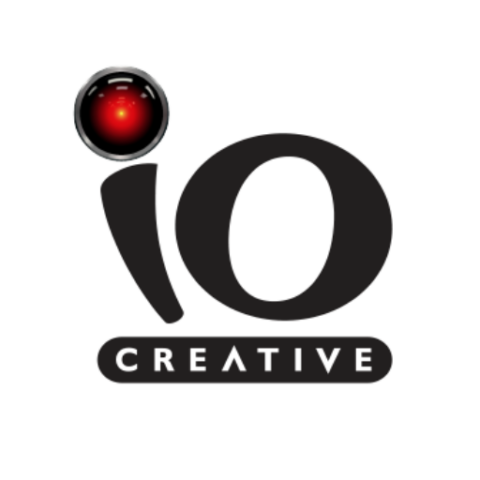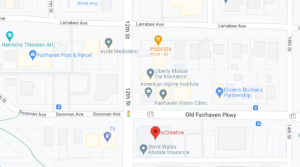A Case for Simple Math
Conversion rate optimization (CRO) is a vital addition to any business’ digital marketing, though defining it requires as much division as practicing it. Conversions are desired transactions from website visitors, ranging from sales to downloads to subscriptions. The conversion rate is the number of conversions divided by the number of visits (for repeatable actions) or users (for one-time actions). So conversion rate optimization simply means raising the percentage of conversions-per-traffic through calculated website development.
The benefits of CRO are more straightforward. Conversions are typically the end goal of all digital marketing strategies, so receiving them means your business thrives off of traffic from the right customers. Increased traffic alone will not suffice if users typically leave without converting. While our SEO and Website Development services are designed to increase and sustain traffic, CRO is natural next step and complementary service to the others. As a strategy, CRO works in conjunction with SEO and website development; as an outcome, it’s the ideal sum of their progress.
ioCreative’s expert Website, Branding, and SEO services result in CRO. We can help you identify goals, always the first step in determining what kind of conversions to attract. Afterward, we can devise action plans with your advice. The sections below explain various strategies we use according to your business’ particular needs and selling points. With such high-quality collaboration behind it, your conversion rate can multiply.
Measuring Up with CRO Best Practices
After identifying a goal, the remainder of CRO efforts should attract visitors’ undivided attention. Conversion forms should be easily findable on your site, and tests can determine how they should look. A/B tests involve testing two versions of a form, or even an alphabet’s worth, to determine which performs best. Satisfaction surveys can account for user behavior, informing how to improve the form design. Analytics tools measure these data just as they measure SEO’s success at compelling users’ initial visits.
Like SEO, CRO requires solving for UX. Forms should have a straightforward call-to-action that compels visitors to convert, often adding value such as free samples. They should not overwhelm visitors with more fields to fill in than necessary. Designs are crafted to avoid “banner blindness,” using elements such as contrasting colors to catch users’ eyes. The remainder of the site should be well-developed so that the conversion form, easily accessible from the landing page, can be said to “stick the landing.”
Based on your input, we can do the math toward identifying your target audience starting out and along the way. Our expertise in evaluating analytics and test results will let us adapt your website toward customers’ needs at every step. As the median between your business and complex marketing data, you can count on us to take all factors into account.
Ecommerce That Converts
If your business’ conversions take the form of selling products or services online, you’re engaging in ecommerce. As our Local versus National SEO page explains, businesses that rely primarily or exclusively on ecommerce benefit most from national SEO. CRO for ecommerce requires the same emphasis on brand awareness. Competitive analysis and Content Marketing can foster brand identity for the benefit of CRO as they would for SEO.
Ecommerce comes in three types: business-to-business (B2B), business-to-consumer (B2C), and consumer-to-consumer (C2C). Of these, B2B relies most on brand awareness since businesses choose investments carefully. Customers have alternative choices at their fingertips. However, B2C still benefits when conversion forms or content marketing add value that your multiple competitors lack. An up-to-date website that shows your work will let customers know you solve their problems in an expanding online market.
We can formulate your ecommerce CRO plans through data analysis techniques mentioned above. Our Branding services in particular cover everything from competitive analysis to graphic design. All the world’s a stage in ecommerce, so we’ll help you play to your strengths at every stage of the marketing process.
Geographic Targets: Striking while the Iron Is Hot
Geofencing and Geotargeting are two CRO strategies for when locality factors into your businesses. In digital marketing, geofencing is virtually mapping a perimeter of a physical space which, when visited by folks using mobile technology, triggers social media alerts or digital ads marketing your business to these folks. Storefronts or venues within this virtual perimeter may belong to you, competitors, or business partners. With at least 91% of Americans owning smartphones, there’s no need to be on the “fence” about this up-and-coming technique.
Geotargeting is presenting prospective customers with localized content. As with local SEO, thoroughly providing your business’ own information can connect you with local customers. However, businesses can more directly target users’ locations with GPS software or pages where users can input their locations. Like its narrow outgrowth of geofencing, geotargeting can increase conversions quickly and benefit long-term brand awareness.
All things being equal, our previously-mentioned skills at forming, analyzing, and adapting plans can also apply to geofencing and geotargeting. Optimizing these practices takes trial-and-error in our ever-evolving digital market. But seeing prospects change into customers should convert anyone toward the dynamic end goal of conversions.
GET IN TOUCH
Make Contact

